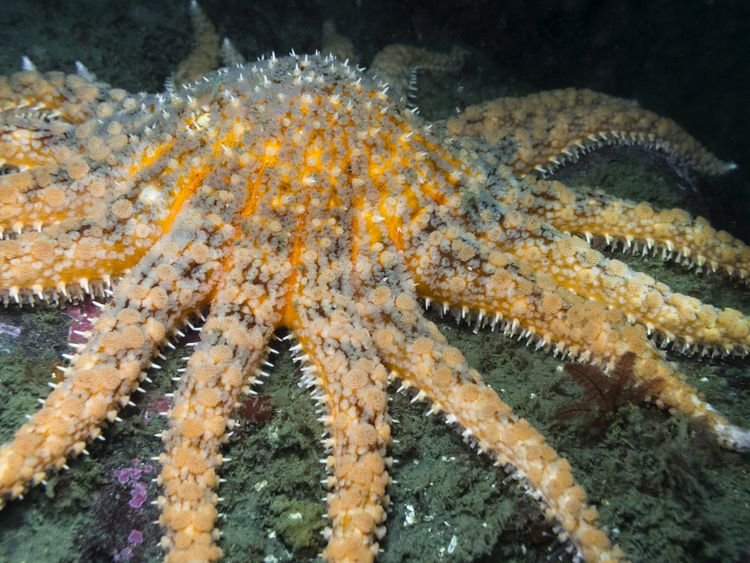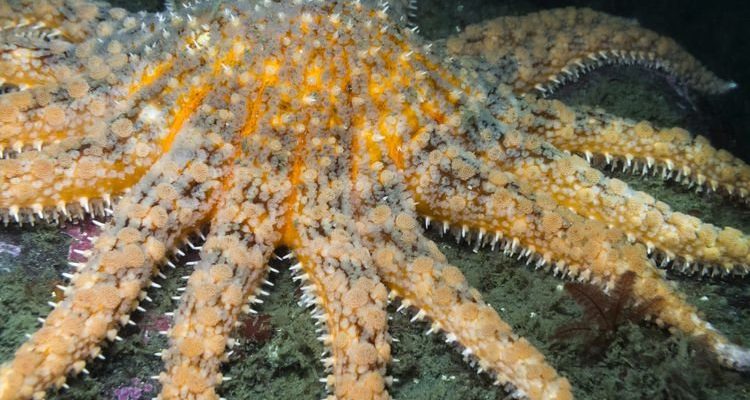
The truth is, the wild world of starfish isn’t as safe as it seems. Just like a remote can face issues like low battery or connectivity problems, starfish also deal with environmental challenges that can threaten their very existence. From climate change to pollution and predators, these marine marvels are navigating a stormy sea of risks. So, let’s dive deeper into the common threats to starfish and what’s happening in their underwater world.
Climate Change and Rising Sea Temperatures
One of the biggest threats to starfish is climate change, specifically rising sea temperatures. When the ocean gets warmer, it can be like turning up the heat on a stovetop. Just as you wouldn’t want to be left in a hot room, starfish don’t thrive in warmer waters. Increased temperatures can lead to coral bleaching and disrupt entire ocean ecosystems, leaving starfish struggling for survival.
These higher temperatures make starfish more susceptible to disease. For example, in recent years, many starfish populations have experienced mass die-offs due to a phenomenon known as Sea Star Wasting Disease. When temperatures rise, this condition can spread more easily, affecting entire colonies of starfish and leading to devastating losses. Honestly, it’s like a domino effect—when one part of the ecosystem shifts, everything else feels the impact.
Moreover, warmer waters can change the distribution of marine species, including food sources for starfish. As their prey shifts or declines, starfish may find it increasingly difficult to find enough to eat, further threatening their populations. The relationship between temperature, food availability, and disease keeps evolving, creating a precarious situation for these delightful creatures.
Ocean Acidification
You might be wondering what ocean acidification has to do with starfish. Well, the short answer is: a lot. As we burn fossil fuels, carbon dioxide (CO2) gets absorbed by our oceans, leading to a more acidic environment. This change in pH can be detrimental to various marine species, including starfish.
Starfish have a unique ability to regenerate lost limbs, but increased acidity can interfere with their ability to calcify the structures they need for this process. Think of it like building a house: if the materials are weak or damaged, the house will struggle to stand. Starfish rely on calcium carbonate to create their bodies, and when the ocean becomes more acidic, it can hinder this essential process.
Additionally, acidification can impact the species that starfish depend on for food. Shellfish, including clams and oysters, are more affected by acidic waters, which can lead to declines in these populations. As their food source dwindles, starfish face even more challenges in securing the nutrients needed to thrive.
Pollution and Debris
Pollution is another significant threat to starfish, and it comes in many forms. Runoff from land can introduce harmful chemicals and waste into the ocean. You can think of it as a remote control collecting dust and grime. Over time, if not cleaned, it adds up, and the remote becomes less effective. Similarly, the ocean environment can become contaminated, impacting starfish and other sea creatures.
Plastic is a big issue too. Starfish sometimes get caught in fishing nets or ingest plastic debris, mistaking it for food. This can lead to serious health problems or even death. Just like a remote that stops working because of a dead battery, starfish can be rendered helpless by pollution in their environment.
Furthermore, heavy metals and toxins can accumulate in starfish, leading to bioaccumulation, a serious issue that can disrupt their reproductive systems and overall health. When their health declines, it can set off a chain reaction that affects the entire ecosystem.
Predation and Competition
While they might not seem like it, starfish have natural predators too. Sea otters, crabs, and some species of fish see starfish as a tasty meal. In a way, it’s like a game of survival—those with the best defenses or clever strategies tend to thrive, while others become targets.
The problem arises when predation rates increase, often due to changes in the environment. For instance, if sea otter populations rise, they may prey on starfish more heavily. This can lead to significant declines in starfish numbers, which can upset the balance of the whole ecosystem. Think of it as a delicate dance: when one dancer shifts out of step, it impacts the entire performance.
Competition for food and space is another issue. When populations of starfish grow too large, they can deplete resources more quickly, which can lead to starvation. Additionally, other species, like sea urchins, can compete for the same food sources. If conditions change—like a warmer ocean or increased pollution—these competitive pressures can push starfish populations to the brink.
Habitat Destruction
Another major threat to starfish comes from habitat destruction. Coastal development, pollution, and climate change can all lead to the loss of critical environments where starfish thrive. Think about how much you enjoy a cozy living room. If the walls were torn down and the furniture removed, you wouldn’t feel at home anymore; similarly, starfish need their habitats to provide food and shelter.
Telescoping industries and activities—like dredging or construction—can severely alter the seafloor. When starfish lose their homes, they become more vulnerable to predators and environmental stressors. The same goes for destructive fishing practices. Techniques like bottom trawling can tear up sensitive habitats where starfish live, further stressing their populations.
In addition to physical destruction, human activities can also introduce noise and light pollution, disrupting the natural behaviors of starfish. Changes in their environment can lead to stress and a decrease in their overall health, making it all the more difficult for them to survive.
Conservation Efforts and What You Can Do
Protecting starfish from these threats requires collective effort and awareness. Fortunately, many organizations are working to conserve marine ecosystems and monitor starfish populations. Initiatives like marine protected areas (MPAs) help provide safe havens for starfish and other marine life, allowing them to thrive without the pressures of fishing and development.
You might be wondering what you can do to help. Here are some easy steps:
- Reduce plastic use: Start using reusable bags and bottles to limit plastic pollution.
- Support sustainable seafood: Choose seafood that comes from responsible fisheries to help protect marine ecosystems.
- Get involved: Join local beach clean-ups or volunteer with organizations focused on marine conservation.
- Spread awareness: Talk to your friends and family about the importance of protecting starfish and their habitats.
Every little action adds up. When we work together to combat pollution and support ocean conservation, we take important steps toward preserving these extraordinary creatures.
The challenges facing starfish in the wild are numerous and complex. From climate change and ocean acidification to pollution and habitat destruction, these beautiful marine animals must navigate a series of obstacles just to survive. However, by understanding these threats, we can take meaningful steps to protect them and their ecosystems. It’s like giving a remote a fresh set of batteries; with the right support, starfish can continue to thrive in our oceans for generations to come. So next time you see a starfish, take a moment to appreciate its resilience and the role it plays in our delicate marine environments.

